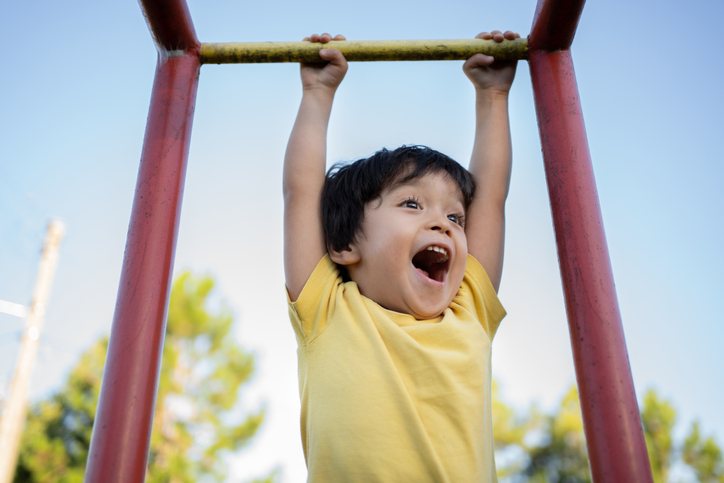
One of the first major milestones that children hit is learning how to walk. They’re called “toddlers” for a reason. Their walk looks more like a toddle with their legs wide apart as they learn to put one foot in front of the other. Whether it’s learning to walk properly, playing games, going to school, or learning to play sports, working on coordination with your toddler is crucial to their future development and ability.
Coordination refers to whether or not a child can get their arms and legs to work together in an effective way. The two most important types of coordination skills to develop are bilateral coordination skills, and hand eye coordination skills. Read on to learn fun ways to help your toddler work on their coordination, while keeping them entertained at the same time!
Bilateral Coordination Skills
Bilateral coordination skills refer to the ability of a toddler to use both sides of their body in a coordinated way. For example, being able to tie shoelaces, using a fork and knife, using scissors, and jumping.
The following are our favorite activities to do with your toddler to work on their bilateral coordination:
- Using stencils: have your toddler hold a stencil with one hand while they trace it with the other hand
- Ball games: have your toddler roll a ball toward you, use both of their hands to pass a ball to you, lift the ball over their head with both of their hands, and roll it with both hands toward a target
- Lacing: Use a hole puncher to punch holes in paper, and have your toddler lace a string through the holes
- Tear and crumple up pieces of paper with both of their hands
- Play with Play-Doh
- Frost cookies with a butter knife
- Play Simon Says and have your toddler imitate where you are pointing to on your body
Hand Eye Coordination Skills
Hand eye coordination skills refer to the ability of the eyes to guide the hands during movement such as reaching, grasping, and drawing. Between the ages of 2-5, children develop a preference for using their right or left hand as their dominant hand.
Our favorite activities for improving hand eye coordination skills are:
- Have a (gentle) pillow fight! Softly throw pillows at each other to work on their catching, throwing, and balance
- Play in a sand pit: have your toddler fill and empty buckets with sand
- Drawing: drawing is one of the best ways to teach a toddler how their hands and eyes work together, but invest in easily washable markers!
- Chalk: similar to drawing, chalk is a great way to get time outside while allowing your toddler to work on their hand eye coordination. Plus, no inside mess! Just don’t forget the sunscreen
- Building blocks: your toddler will love building with blocks and knocking them down
- Pipe Cleaners: let your toddler play with pipe cleaners and make different shapes with them. Encourage them to twist two together if they are able to!
It’s important to understand that every child develops at their own pace. The skills that children develop at an early age set the foundation for the skills they will develop as they continue to grow. If you’re concerned about the rate that your child is developing, early intervention can make a huge difference.
Let your doctor know if your toddler doesn’t do the following:
By 15 months:
- Takes a few steps alone
By 18 months:
- Walks without holding onto something
- Scribbles
- Climb on and off a chair or couch
By 24 months:
- Walks up stairs without assistance
- Runs
Not reaching any of these milestones does not always indicate a problem, but it is worth consulting a doctor about. The medical professionals at StarMed Healthcare are there to see you and your child 365 days a year and are proud to offer bilingual services at all of our clinics. Walk-ins are always welcomed, but if you prefer to schedule an appointment visit us here!
